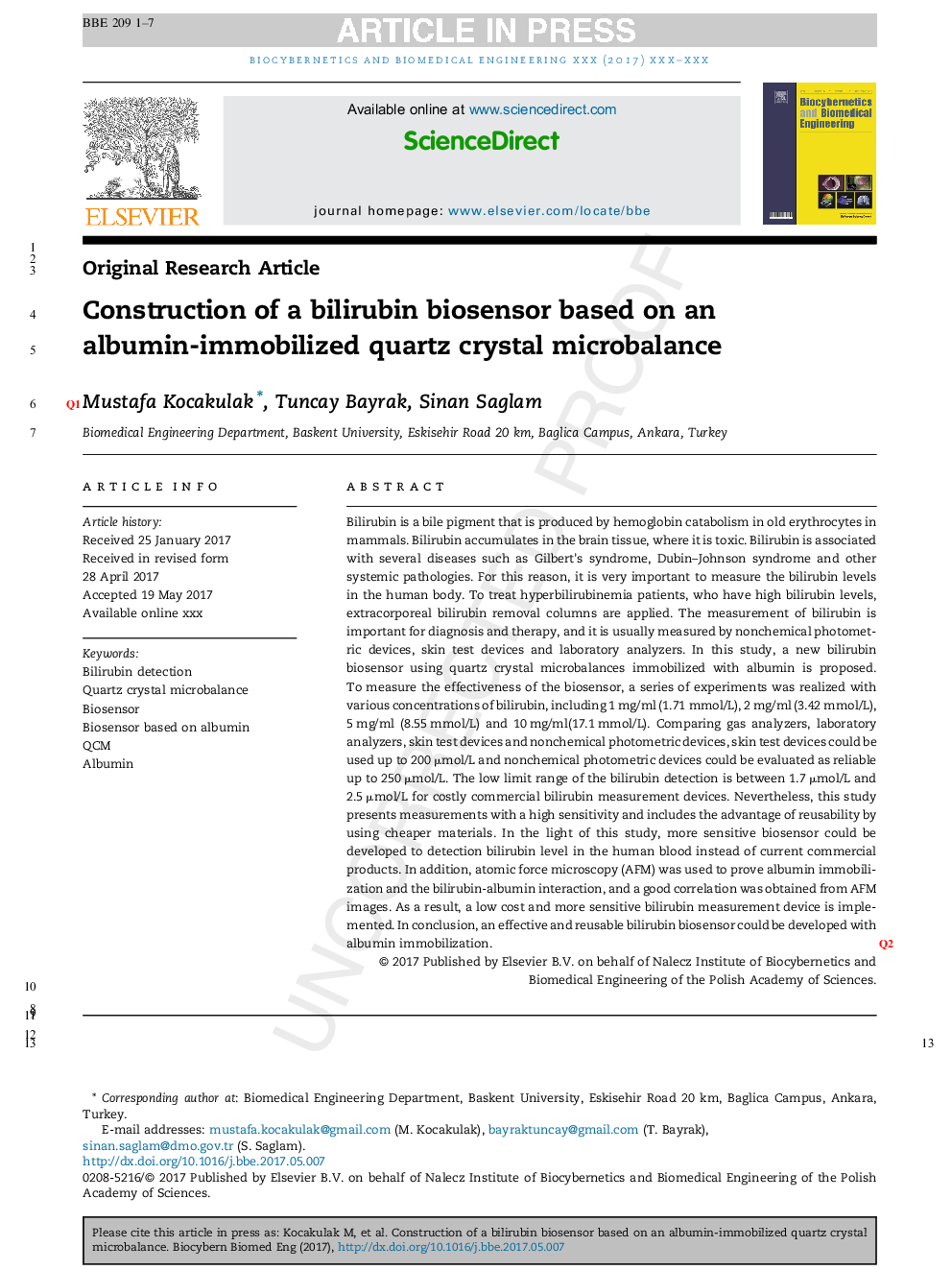| Article ID | Journal | Published Year | Pages | File Type |
|---|---|---|---|---|
| 6484228 | Biocybernetics and Biomedical Engineering | 2017 | 7 Pages |
Abstract
Bilirubin, a bile pigment, is associated with several diseases and systemic pathologies. The measurement of bilirubin is important for diagnosis and therapy, and many expensive methods are used to measure the bilirubin amount in blood. In this study, a new bilirubin biosensor using quartz crystal microbalances immobilized with albumin is proposed. To measure the effectiveness of the biosensor, a series of experiments was realized with various concentrations of bilirubin, including 1Â mg/dL, 2Â mg/dL, 5Â mg/dL and 10Â mg/dL. Comparing blood gas analyzers, laboratory analyzers, skin test devices and nonchemical photometric devices, blood gas analyzers have a range of 0.5-35Â mg/dL, laboratory analyzers have a range of 0-30Â mg/dL, skin test devices could be used up to 11.7Â mg/dL, and nonchemical photometric devices could be evaluated as reliable up to 14.6Â mg/dL. The low limit range of the bilirubin detection is between 0.099Â mg/dL and 0.146Â mg/dL for some special commercial bilirubin measurement devices. Nevertheless, this study presents measurements with a high sensitivity and includes the advantage of reusability by using cheaper materials. To prove albumin immobilization and the bilirubin-albumin interaction atomic force microscopy (AFM) was used, and a good correlation was achieved from AFM images. In conclusion, considering the cost-effectiveness side of the proposed method, a low cost and more sensitive bilirubin measurement device which is effective and reusable was developed instead of the current commercial products.
Related Topics
Physical Sciences and Engineering
Chemical Engineering
Bioengineering
Authors
Mustafa Kocakulak, Tuncay Bayrak, Sinan Saglam,
